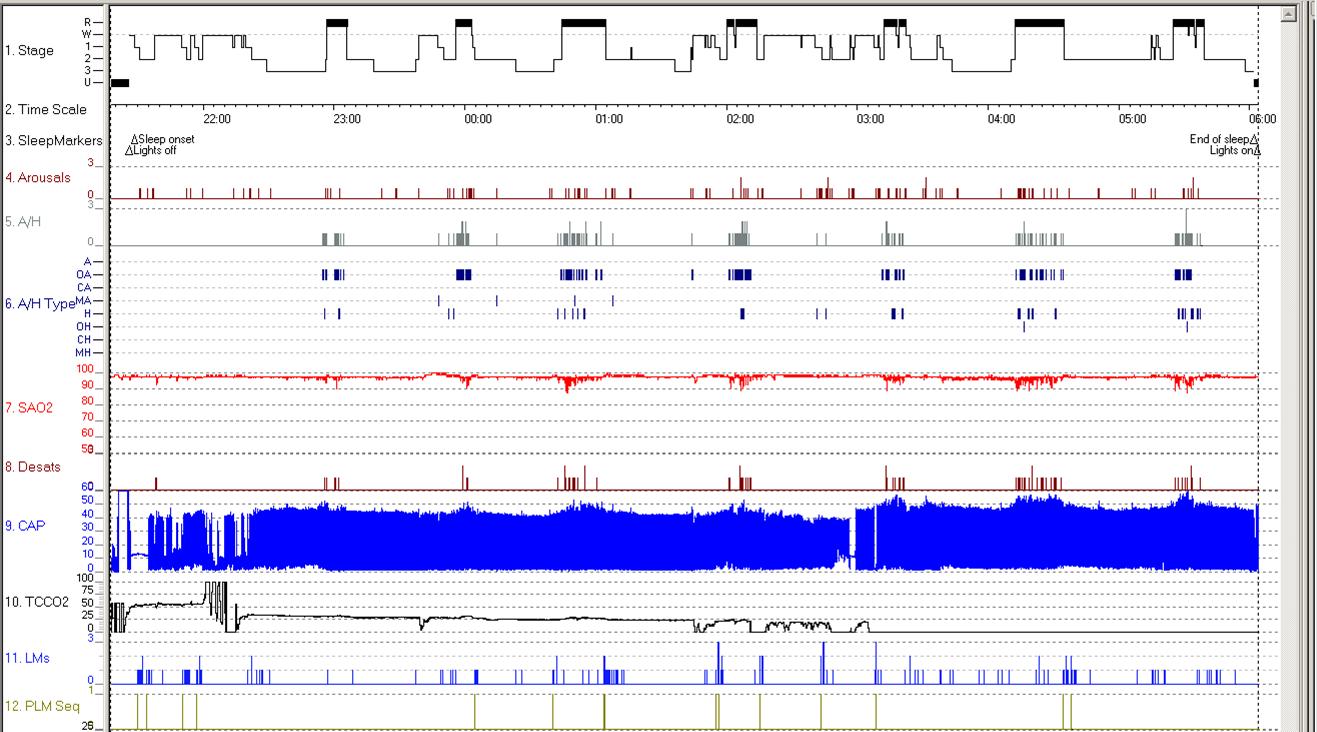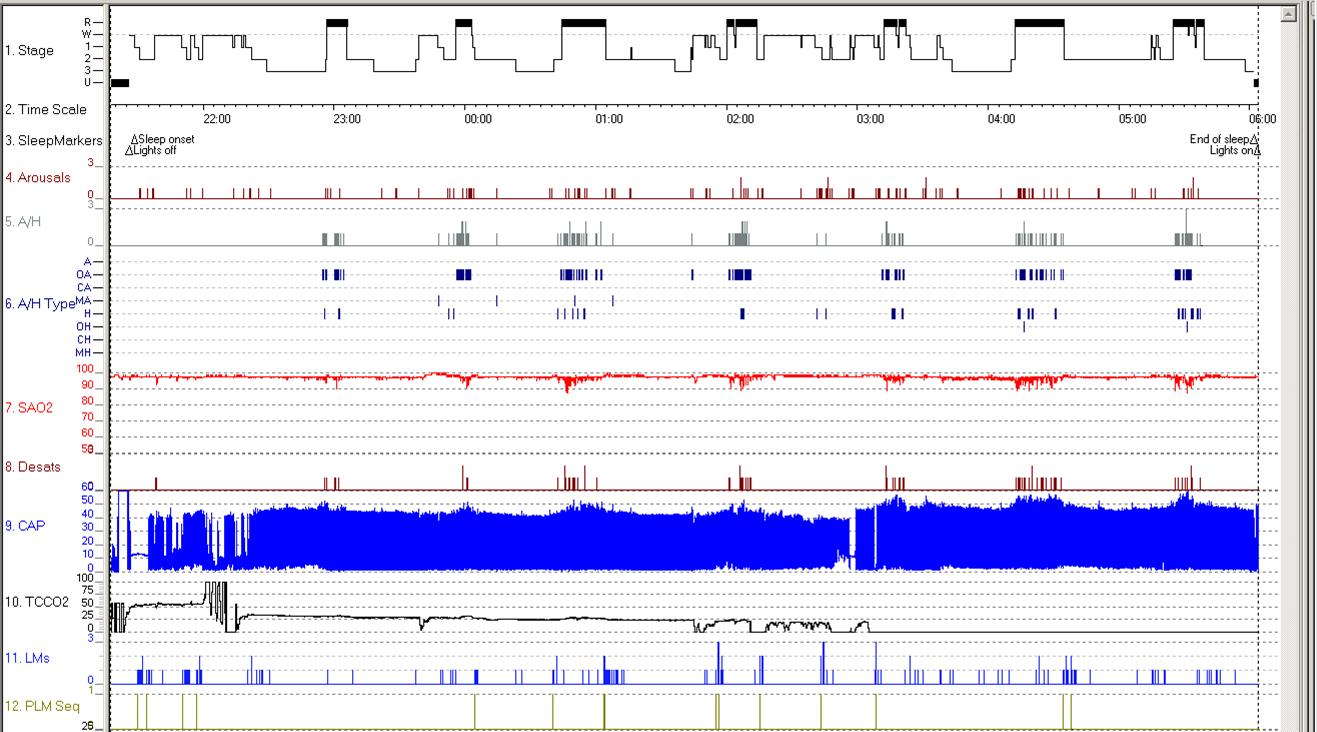Contributed by Lee J. Brooks, MD, Department of Pediatrics, University of Pennsylvania, Pulmonary Division, Children’s Hospital of Philadelphia, Philadelphia, PA
This hypnogram is derived from an overnight polysomnogram in a patient who presented with complaints of snoring and gasping during sleep.
Abbreviations for figure:
R=REM; W=Wake; 1=Stage N1; 2= Stage N2; 3=Stage N3; U=Unscored; Apneas/Hypopneas; A=Apneas (not categorized); OA=Obstructive apnea; CA= Central apnea; MA=Mixed apnea; H=Hypopneas (not categorized); OH=Obstructive hypopneas; CH=Central hypopneas; MH=mixed hypopneas; SaO2 =oxyhemoglobin saturation; Desats = desaturation events; CAP=capnography; end tidal CO2 (mm Hg); TcCO2=transcutaneous CO2 (torr); LMs=leg movements; PLM Seq=periodic leg movement sequences
- What is the age of the patient?
a. 0-2 years
b. 3-19 years
c. 20-45 years
d. 46-65 years
e. Over 65 years
-
What is your diagnosis?
Answers:
- The patient is 13 months old. Note the frequent, short (about 1 hour) sleep cycles (see bar highlighting the sleep stages of the hypnogram).
- The patient has obstructive sleep apnea (OSA), particularly during REM sleep. Note the respiratory events, desaturations, and increased end-tidal CO2, predominantly during REM sleep (see box outlining respiratory events).
The sleep cycle of infants generally last from 40-50 minutes. This cycle length increases gradually to about 60 minutes by 18 to 24 months, and to 90 minutes by 5 years of age. Young infants enter sleep directly through REM sleep; by the age of 3 to 8 months, most infants are entering sleep through non-REM sleep.
Children with OSA usually present with snoring. Their parents or siblings may describe restless sleep, and perhaps respiratory pauses. Unlike adults, it is uncommon for young children to describe daytime sleepiness. The manifestations may be more subtle, including behavior problems, difficulty paying attention in school, or “zoning out”, hyperactivity, and attention deficit disorder-like behavior. Children with OSA may be misdiagnosed with Attention Deficit Disorder. The diagnosis should be confirmed with overnight polysomnography; about half the children referred to a sleep laboratory for suspected OSA have a normal study. Split night and nap studies are usually not sufficient since the children may not achieve REM sleep; thus, a patient like this one, whose events are most prominent in REM, may be misdiagnosed as normal. Similarly, unattended home studies are not recommended since there is no technologist available to replace sensors that often come off a mobile child.
References:
- Brooks LJ. Obstructive sleep apnea syndrome in children: Clinical features and pathophysiology. In : Sheldon S, Ferber R, Kryger MH, (editors). Principles and Practice of Pediatric Sleep Medicine. Elsevier Saunders, Philadelphia 2005:223-230.
- Sheldon, SH. Polysomnography in infants and children. In: Sheldon SH, Ferber R, Kryger MH, (editors). Principles and Practice of Pediatric Sleep Medicine, Philadelphia, PA: Elsevier Saunders; 2005. P49-71.
****ATS Policy prohibits providing ATS COI disclosures and/or their contents to other individuals unless specifically authorized by ATS, and all ATS COI disclosures must be deleted from the recipient's email account and personal computer once the review is completed. ****





